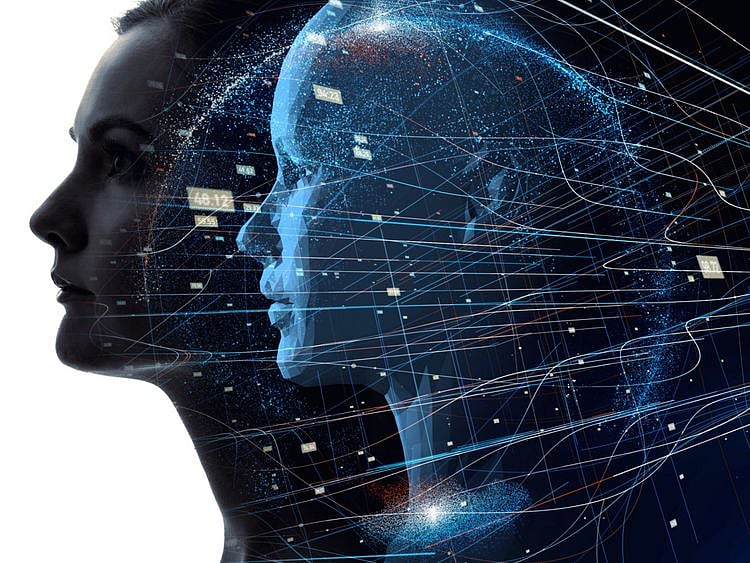It was an ominous message that advanced a new way of dealing with complications. In 1970, when an oxygen tank on the Apollo 13 exploded — while the spacecraft was more than 300,000km away from Earth — one of the astronauts radioed in a line that has now been immortalised in Hollywood movies: “Houston, we have a problem.” Nasa dealt with that problem by first testing various solutions here on Earth, in replicas of the Apollo 13. This idea of using a physical twin caught on, and eventually gave way to the digital twin — a copy of a real-world object that exists digitally and can be used to understand how the actual entity would respond to various inputs.
Digital twins have become popular across industries and are playing an increasingly vital role in healthcare. Anirban Bhattacharyya, Board Member of Amplo Global, a startup that provides artificial intelligence-driven digital twins, points out that the technology allows healthcare professionals to run clinical trials, test or validate new drugs, perform what-if analyses of various procedures, or understand the causes and effects of different treatment plans. And all of this can be done without the need to conduct real-life tests on patients. “A digital twin is a powerful tool in healthcare because it is informed by sensor data that are collected from the twin’s physical counterpart, fed into an IoT platform and enriched by AI,” says Bhattacharyya, adding that the digital twin and its corresponding physical counterpart exist in parallel and evolve together.
Twinning the human body
In 2018, Siemens Healthineers demoed an AI-powered digital twin of the human heart that can be used to visualise responses to treatments even before intervention is required. The ultimate goal of the project is to create a digital twin of the entire human body “to better understand patient health and predict changes as well as therapy outcomes”. Similarly, Hewlett Packard Enterprise has teamed up with École polytechnique fédérale de Lausanne on the Blue Brain Project, a Swiss brain research initiative that uses a supercomputer to create a digital twin that will further our understanding of brain diseases.
Another exciting venture is DigiTwins, which involves more than 200 partners from 118 organisations in 29 countries. The aim is to develop a revolutionary approach to healthcare based on detailed modelling systems, which would enable various treatment simulations to be run without any harm to the patient.
“The increasing integration of the digital twin concept into healthcare is to be welcomed,” says Ahmad Yahya, Chief Operating Officer at American Hospital Dubai. “By twinning a patient’s profile digitally and integrating AI-led data and other social and psychological inputs for a powerful predictive model, we are paving the way for breakthroughs in more effective patient-care outcomes. The adoption of the digital twins concept will also significantly reduce medical care costs, improve clinical decision-making and disease management, helping healthcare optimise its resources.
Aster DM Healthcare, with presence across the GCC and India, has been working on a comprehensive AI and data platform called einstAIn that allows it to leverage the benefits of digital twin technology, says Dr Satish Rath, its Group Chief Officer for Innovation and Research. “The platform collates all types of data into a high-performance data hub and then utilises advanced AI and machine learning techniques for inference and triangulation to arrive at a patient’s digital twin.”
Towards personalised medicine
A major weakness with current therapies is that they have been designed for the average person — a statistical mashup that may represent many patients, but not all. This means treatments turn out to be ineffective for a significant percentage. In an alarming report from 2013, the US FDA puts that number as high as 70 per cent for patients with Alzheimer’s, where drugs had made no difference. Similarly, drugs were ineffective in 40 per cent of the cases for asthma, 38 per cent for depression, and 43 per cent for diabetes.
“Today most of our therapies are based on generalised care, which is noticeably far from personalised or actual patient care,” says Dr Rath, noting that patients with the same diagnosis invariably tend to react differently to the same therapy.
But digital twins that have been developed using historical data of a patient and then continuously updated with real-time insights from wearables and other IoT devices can accurately forecast or simulate that patient’s responses to a particular treatment. This also paves the way for hospitals to create care that is predictive, preventive and personalised.
“Platforms like einstAIn that use DTT will play a crucial role in both hospital digital data flow design and precise patient care, including prognosis, diagnosis, monitoring, decision support system, planning and performing surgical procedures, operational strategies, capacities, staffing, drug effect simulation and digital evidence and regulatory,” explains Dr Rath.
As a report from Siemens Healthineers asserts, “Digital twins mirror reality and can detect problems that would otherwise remain imperceptible.” They represent the next step towards the goal of providing “the right treatment for the right patient at the right time”.
Sign up for the Daily Briefing
Get the latest news and updates straight to your inbox
Network Links
GN StoreDownload our app
© Al Nisr Publishing LLC 2025. All rights reserved.
